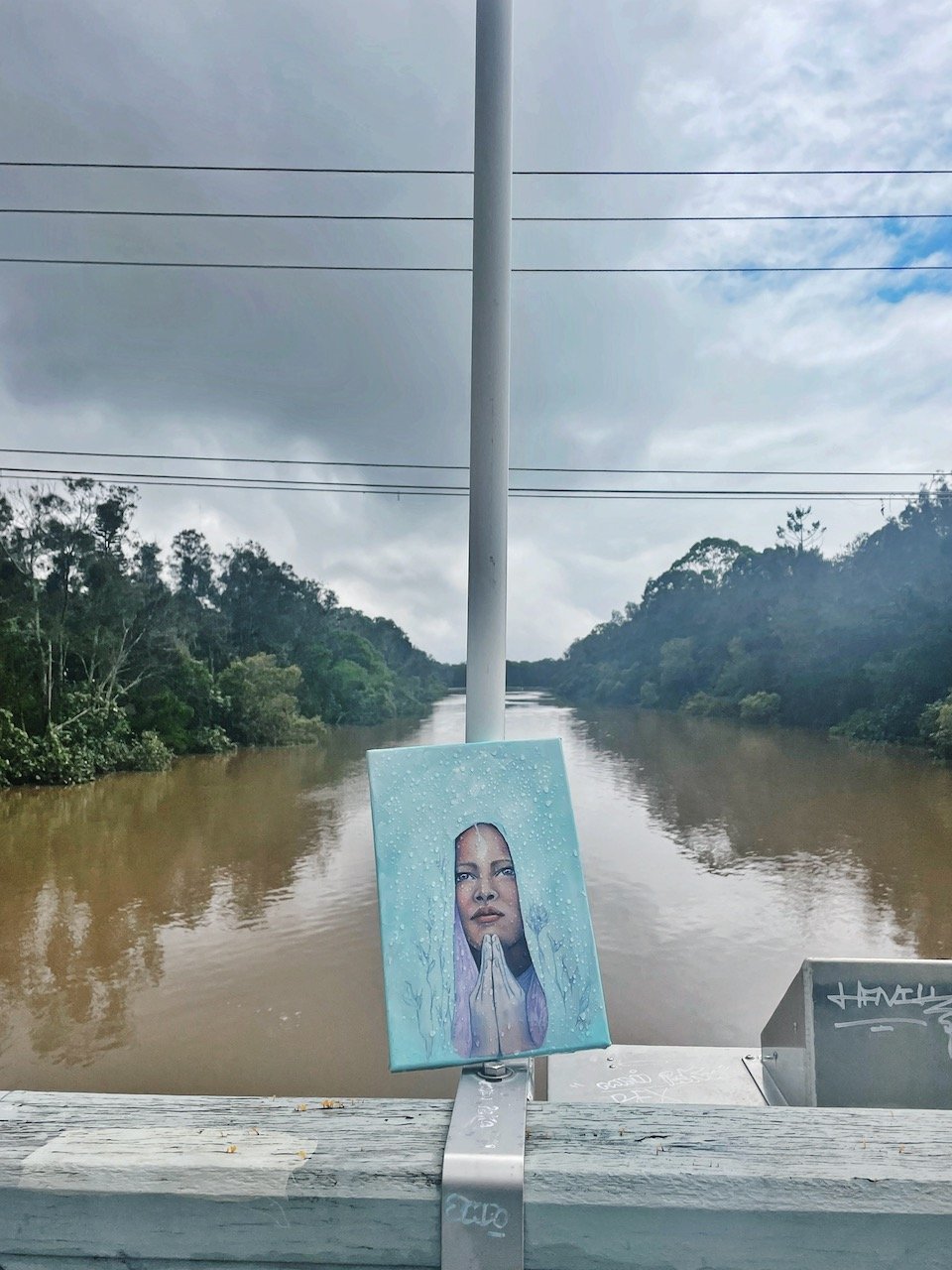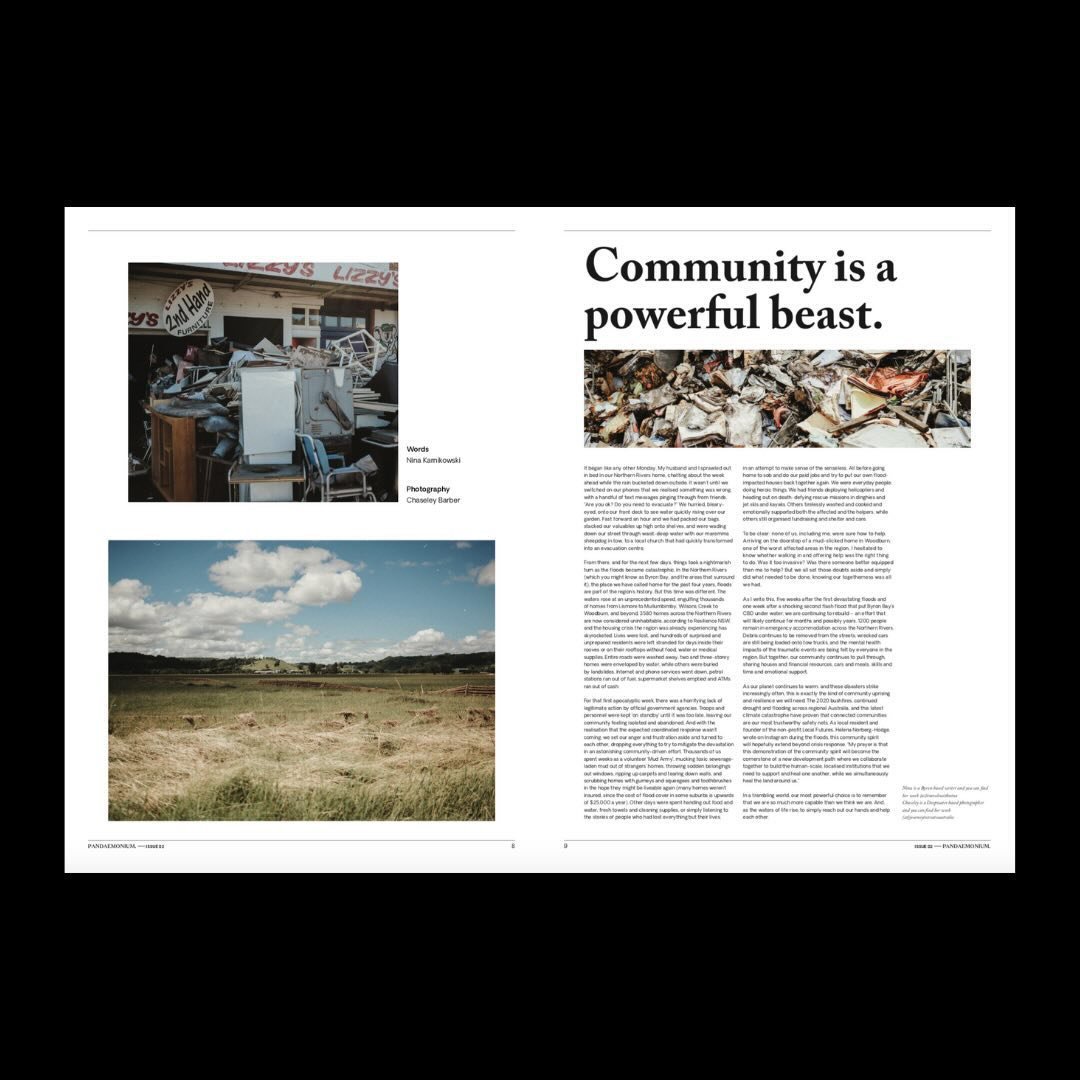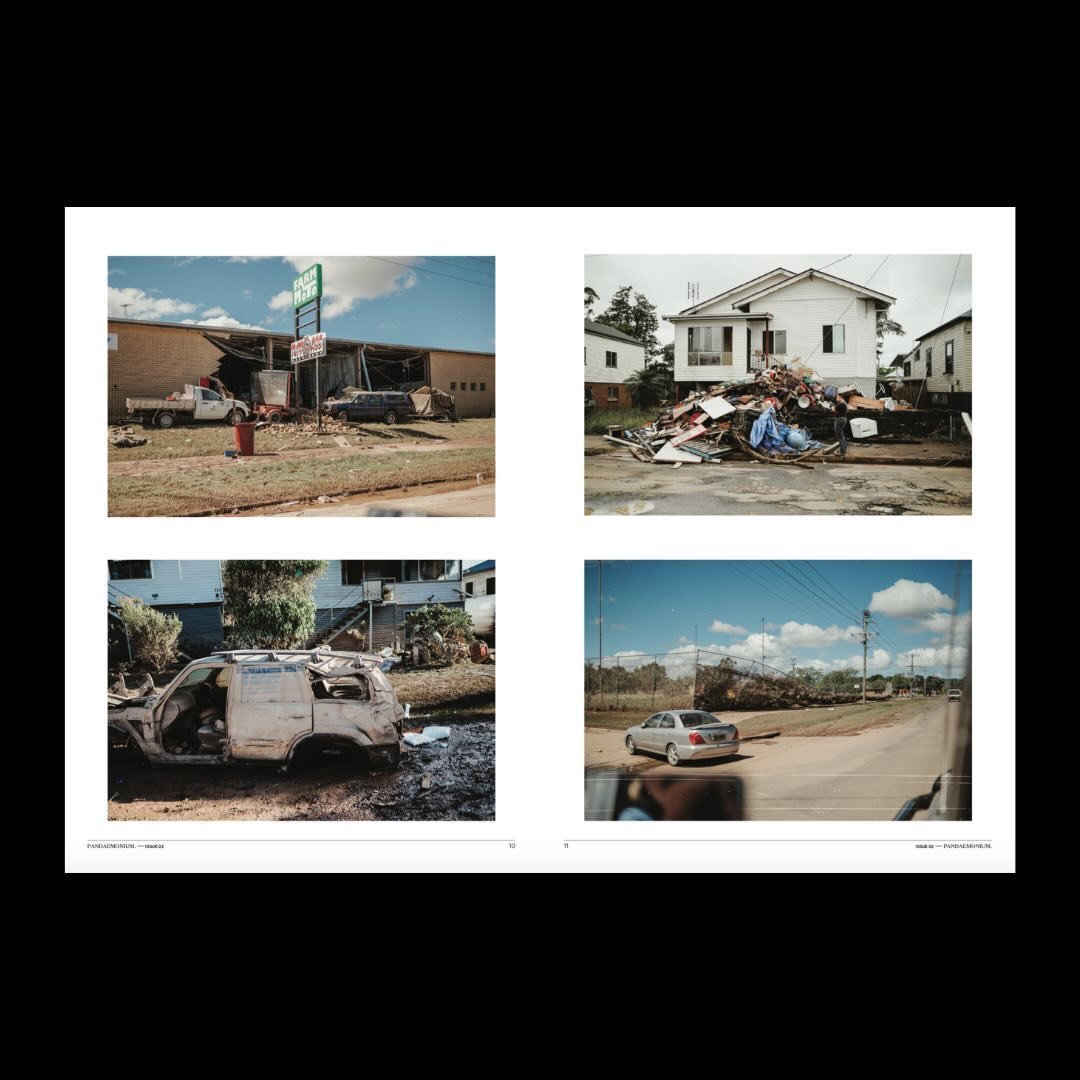COMMUNITY IS A POWERFUL BEAST: PANDAEMONIUM
As our planet continues to warm, and floods and other natural disasters strike increasingly often, community uprising and resilience is what we will need, writes Nina Karnikowski.
It began like any other Monday. My husband and I sprawled out in bed in our Northern Rivers home, chatting about the week ahead while the rain bucketed down outside. It wasn’t until we switched on our phones that we realised something was wrong, with a handful of text messages pinging through from friends. “Are you ok? Do you need to evacuate?”
We hurried, bleary-eyed, onto our front deck to see water quickly rising over our garden. Fast forward an hour and we had packed our bags, stacked our valuables up high onto shelves, and were wading down our street through waist-deep water with our maremma sheepdog in tow, to a local church that had quickly transformed into an evacuation centre.
From there, and for the next few days, things took a nightmarish turn as the floods became catastrophic. In the Northern Rivers (which you might know as Byron Bay, and the areas that surround it), the place we have called home for the past four years, floods are part of the region’s history. But this time was different.
The waters rose at an unprecedented speed, engulfing thousands of homes from Lismore to Mullumbimby, Wilsons Creek to Woodburn, and beyond. 3580 homes across the Northern Rivers are now considered uninhabitable, according to Resilience NSW, and the housing crisis the region was already experiencing has skyrocketed. Lives were lost, and hundreds of surprised and unprepared residents were left stranded for days inside their rooves or on their rooftops without food, water or medical supplies. Entire roads were washed away, two- and three-storey homes were enveloped by water, while others were buried by landslides. Internet and phone services went down, petrol stations ran out of fuel, supermarket shelves emptied and ATMs ran out of cash.
For that first apocalyptic week, there was a horrifying lack of legitimate action by official government agencies. Troops and personnel were kept ‘on standby’ until it was too late, leaving our community feeling isolated and abandoned. And with the realisation that the expected coordinated response wasn’t coming, we set our anger and frustration aside and turned to each other, dropping everything to try to mitigate the devastation in an astonishing community-driven effort.
Thousands of us spent weeks as a volunteer ‘Mud Army’, mucking toxic sewerage-laden mud out of strangers’ homes, throwing sodden belongings out windows, ripping up carpets and tearing down walls, and scrubbing homes with gurneys and squeegees and toothbrushes in the hope they might be liveable again (many homes weren’t insured, since the cost of flood cover in some suburbs is upwards of $25,000 a year).
Other days were spent handing out food and water, fresh towels and cleaning supplies, or simply listening to the stories of people who had lost everything but their lives, in an attempt to make sense of the senseless. All before going home to sob and do our paid jobs and try to put our own flood-impacted houses back together again.
We were everyday people, doing heroic things. We had friends deploying helicopters and heading out on death-defying rescue missions in dinghies and jet skis and kayaks. Others tirelessly washed and cooked and emotionally supported both the affected and the helpers, while others still organised fundraising and shelter and care.
To be clear: none of us, including me, were sure how to help. Arriving on the doorstep of a mud-slicked home in Woodburn, one of the worst affected areas in the region, I hesitated to know whether walking in and offering help was the right thing to do. Was it too invasive? Was there someone better equipped than me to help? But we all set those doubts aside and simply did what needed to be done, knowing our togetherness was all we had.
As I write this, five weeks after the first devastating floods and one week after a shocking second flash flood that put Byron Bay’s CBD under water, we are continuing to rebuild – an effort that will likely continue for months and possibly years. 1200 people remain in emergency accommodation across the Northern Rivers. Debris continues to be removed from the streets, wrecked cars are still being loaded onto tow trucks, and the mental health impacts of the traumatic events are being felt by everyone in the region. But together, our community continues to pull through, sharing houses and financial resources, cars and meals, skills and time and emotional support.
As our planet continues to warm, and these disasters strike increasingly often, this is exactly the kind of community uprising and resilience we will need. The 2020 bushfires and this latest climate catastrophe have proven that connected communities are our most trustworthy safety nets. As local resident and founder of the non-profit Local Futures, Helena Norberg-Hodge, wrote on Instagram during the floods, this community spirit will hopefully extend beyond crisis response.
“My prayer is that this demonstration of the community spirit will become the cornerstone of a new development path where we collaborate together to build the human-scale, localised institutions that we need to support and heal one another, while we simultaneously heal the land around us.”
In a trembling world, our most powerful choice is to remember that we are so much more capable than we think we are. And, as the waters of life rise, to simply reach out our hands and help each other.


